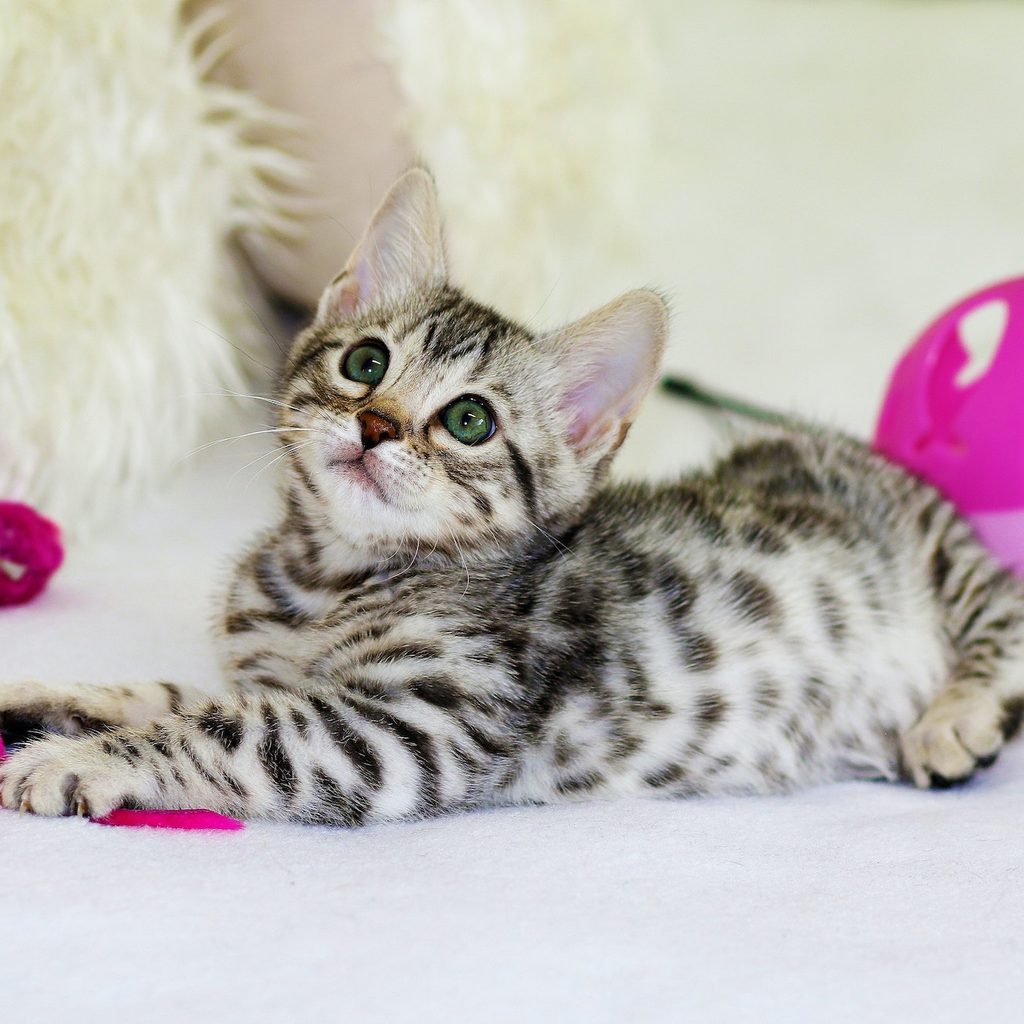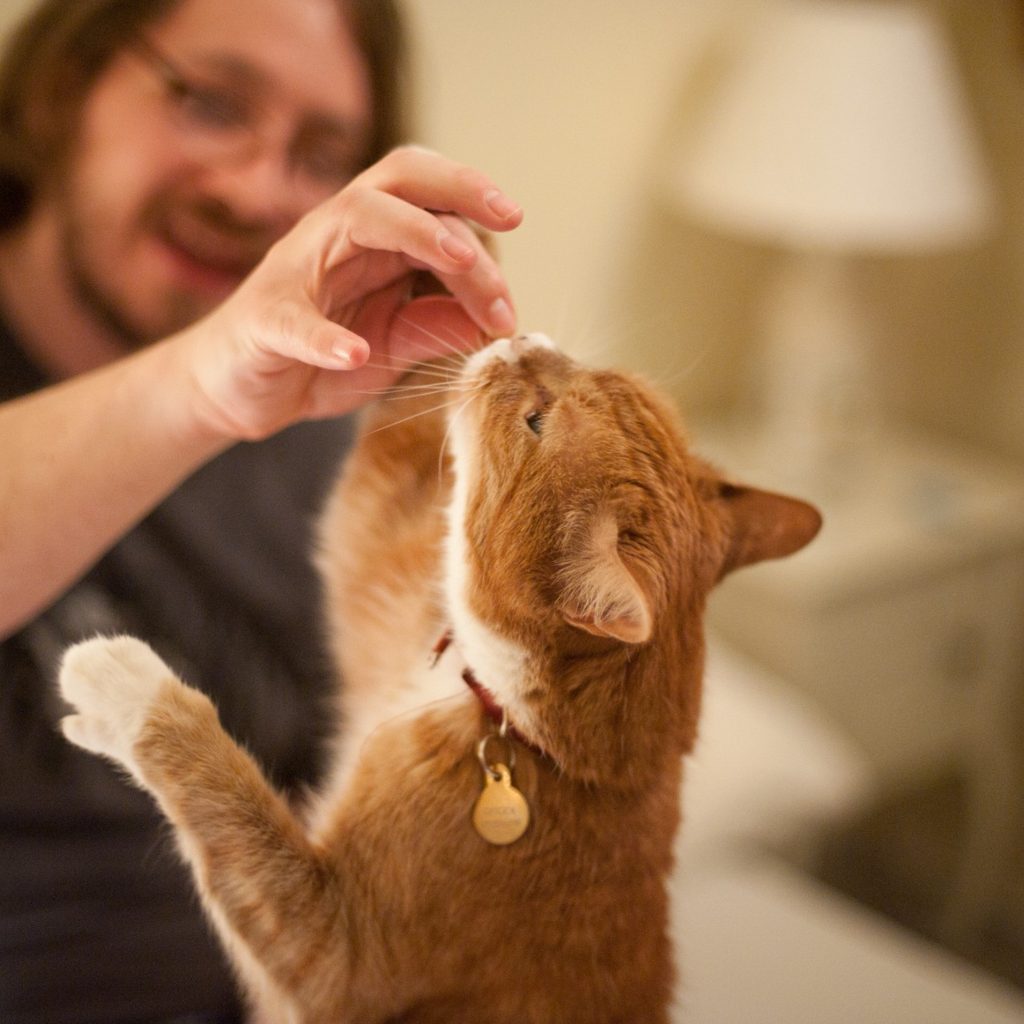You want to treat your cat for special occasions or just to show your love, but treats need the same consideration as cat food. Looking for certain ingredients and checking out labels will help you distinguish healthy cat treats from toxic ones. Nevertheless, too many treats can contribute to weight gain and potentially cause poor health. Treats may also interfere with your cat’s daily dietary habits.
That doesn’t mean you can’t show your cat a little love now and then! Let’s look at how to find a good quality treat that will benefit your cat’s health and well-being while also providing a fun moment here and there. Here’s what you should look for.

Check the ingredients list
First and foremost, you should always check the ingredients list before you purchase your cat’s treats. Look for similar types of things in treats that you would in your high-quality cat foods.
- Labeled meats as the primary (first) ingredient — Look for ingredients like “freeze-dried chicken” as the first ingredient listed and avoid treats that say things like “meat” or “meat meal.” It’s tough to tell the quality of a vague label.
- Natural ingredients — Avoid treats with lots of artificial ingredients. Your cat doesn’t need artificial colors or flavors to enjoy the treats, and there are natural preservatives to keep treats fresh.
- The fewer ingredients, the better — If there’s a whole paragraph of ingredients you don’t recognize, forgo those treats for ones with fewer ingredients.
- Look for domestic sources — Do your research to find companies that source meat and other ingredients locally or within the North American borders. They’ll be fresher.
- Watch those calories — Look at the serving size on your treat bag and be sure it works well with your cat’s overall nutrition plan.
- Check with your vet — If your cat has special dietary needs or you need specific recommendations, your veterinarian is a valuable resource for helping you decipher cat treat ingredients lists.
Consider alternatives

Treats aren’t the only way you can reward your cat. Instead of handing out a treat every time you want to love and appreciate your cat, use a variety of reward methods.
- Use food — Take a little of your cat’s regular food and put it into a puzzle ball. You could also make the entire meal a puzzle. Reward good behavior with some wet food mixed into your cat’s kibble. Using food helps you account for the amount of calories and daily servings.
- Use toys — Toys can help your cat alleviate excess energy and boredom and could turn plain old food into something extraordinary.
- Make your own treats — Be sure to use high quality, cooked meats and whole ingredients. Don’t overfeed treats and consider the extra calorie counts in your daily food servings.
What to avoid in cat treats
The biggest thing to avoid when feeding your cat treats is overfeeding. Relying solely on treats to show love or get your cat to perform is an excellent way to end up with an obese cat. Treats are for special occasions, and you must consider the extra calories in your daily food servings.
Artificial ingredients often mask low quality and are a way to encourage overeating. Artificial colors are for your benefit, not your cat, and artificial flavors often have unidentified sources. The more ingredients on the list that you don’t recognize, the less you should choose that option.
Despite popular conception (and cartoons), cats should never get raw fish or other raw meats. Yes, cats eat raw meat in the wild, but house cats are not wild cats. Raw meats from grocery stores can have harmful bacteria that could cause infection.
Avoid giving your cat scraps from the table or other people food. Your cat doesn’t need milk or cream to be healthy, and this could lead to undesirable behaviors like begging or jumping on the table. It’s best to stick to cat food and specific cat treats.
Never use cat treats as a substitute for true enrichment activities. Your cat begs for a variety of reasons, and one could be attention. Schedule in fun playtime activities to help reduce begging without offering too many calorie-rich treats.
Choosing and using healthy treats

Treats can be an excellent way to reward your cat or provide love, but consider them as part of an overall health strategy. Your cat needs physical and mental stimulation to thrive. Treats are part of that, but so is exercise, playtime, and a healthy diet.
You can give your cat treats with high-quality ingredients and help ensure your cat has the best foundation for health and well-being. With the right treats and the right plan, your indoor cat can thrive.


